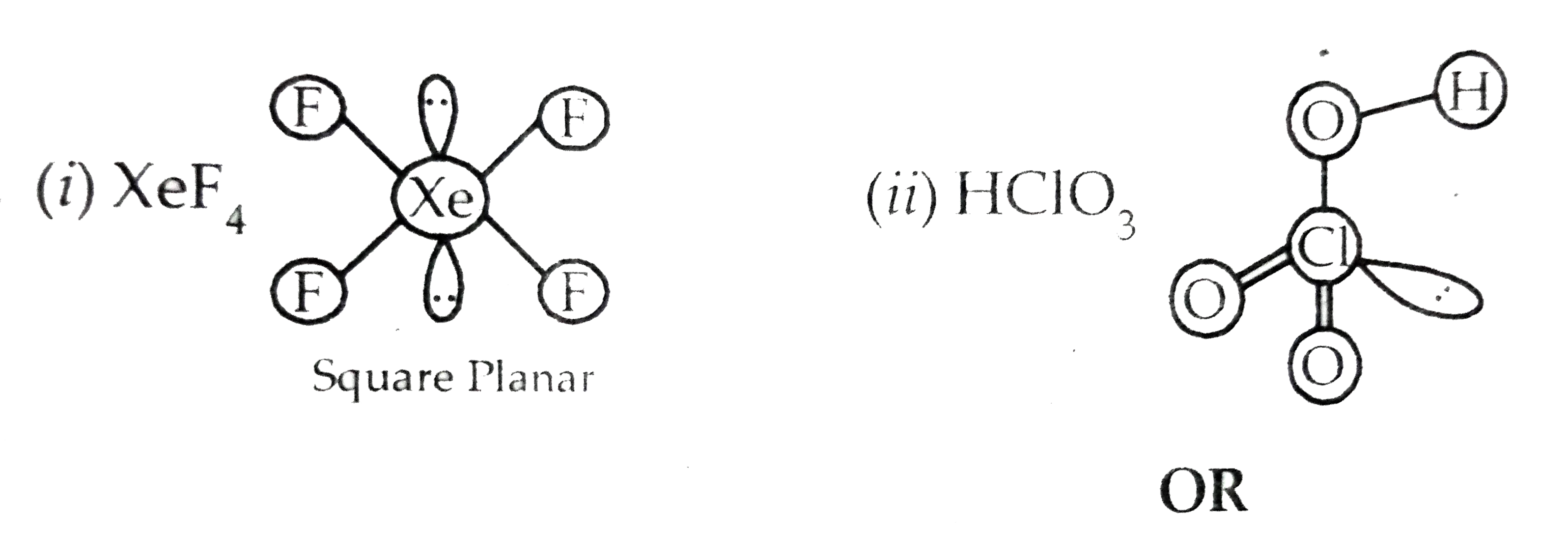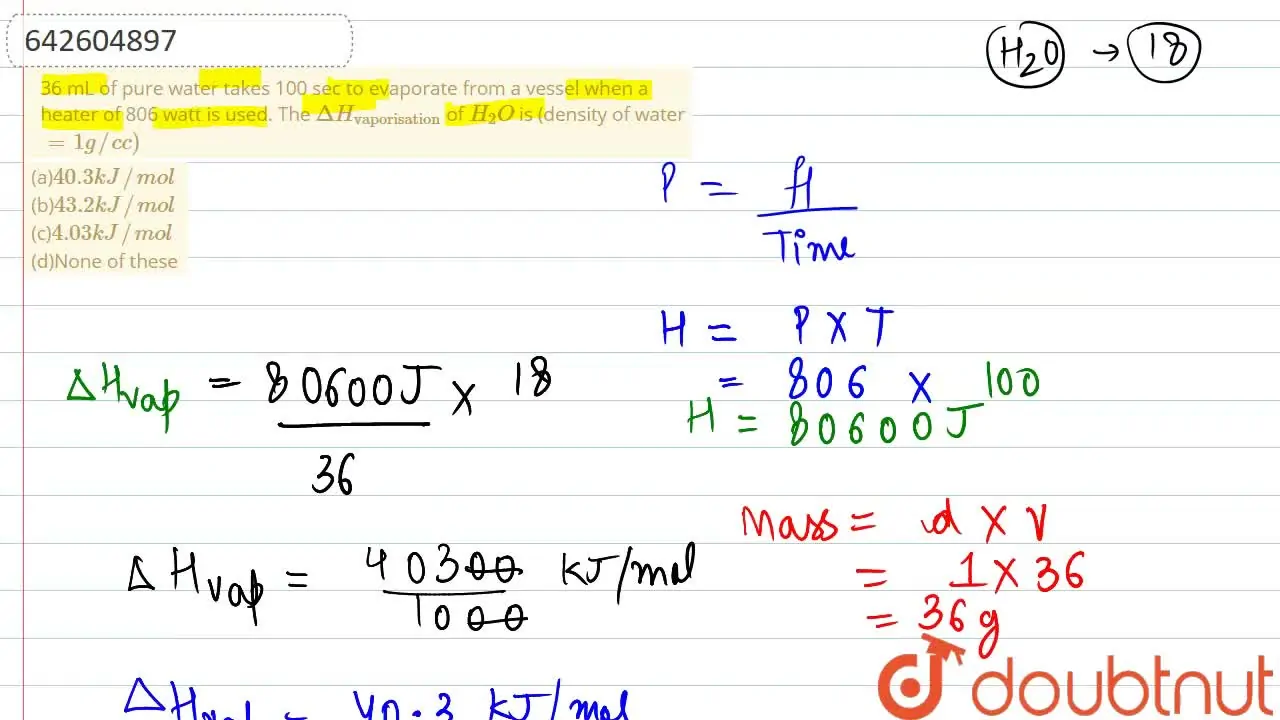(a) Give reasons :
(i) undergoes disproportionation reaction but does not .
(ii) When reacts with excess of is formed and not .
(iii) Dioxygen is a gas while Sulphur is a solid at room temperature .
(b) Draw the structure of the following :
(i)
Video Solution
Text Solution
(a) (i) It is because in , 'P' is in , intermediate oxidation state which can increase to and decrease to where as in , 'P' is in highest oxidation state which can only gain electrons , i.e., undergoes reduction only , acts as oxidising agent and cannot disproportionate .
(ii) As chlorine has vacant d-orbitals and hence show an oxidation state of +3 but F has no d-orbitals , therefore , it cannot show positive oxidation states . Further , since F can show only-1 oxidation state . Hence state . Hence , it can form only and . Moreover , because of bigger size , Cl can accommodate 3 small F atoms around it while F being smaller cannot accommodate three bigger sized Cl atoms around it .
(iii) Due to small size , high electronegativity , oxygen forms multiple bond . As a result , oxygen exists as molecules , which are held together by weak van der waals forces of attraction which can be easily overcome at room temperature . Hence is a gas at room temperature . Sulphur on the other hand , bigger size and lower electronegativity , does not form multiple bond .
Hence it forms S-S single bonds which is stronger bond and has tendency of catenation and exist as in form . Because of bigger size , the forces of attraction holding the molecules together are much stronger which cannot be overcome at room temperature . Consequently , sulphur is a solid at room temperature.
(b) (i) 
|
Updated on:21/07/2023
Related Playlists
- BOOK - XII BOARD PREVIOUS YEAR PAPER ENGLISHCHAPTER - XII BOARDSEXERCISE - OUTSIDE DELHI (SET-I)35videos
XII BOARDS
- BOOK - XII BOARD PREVIOUS YEAR PAPER ENGLISHCHAPTER - XII BOARDSEXERCISE - Set I31videos
XII BOARDS
- BOOK - XII BOARD PREVIOUS YEAR PAPER ENGLISHCHAPTER - XII BOARDSEXERCISE - General Instrucations31videos
XII BOARDS
- BOOK - XII BOARD PREVIOUS YEAR PAPER ENGLISHCHAPTER - SAMPLE PAPER 2019EXERCISE - SECTION: D1videos
SAMPLE PAPER 2019
Similar Questions
Draw the structures of the following:
H3PO3View SolutionDraw the structure of the following :
(i) XeF2
(ii) BrF3View SolutionDraw the structure of the following :
(i) XeF2
(ii) BrF3View SolutionDraw the strucutres of the following
H3PO4View SolutionDraw the structures of the following molecules :
(i)XeOF4,(ii) H3PO3View SolutionGive the disproportionation reaction of H3PO3.
View SolutionDrawn the structure of the following:
(i) H3PO2
(ii) XeF4View SolutionIn H3PO4 which of the following is true?
View SolutionEquivalent weight of H3PO2 when it disproportionates into PH3 and H3PO3 is (mol.wt. of H3PO2=M)
View SolutionAssertion : H3PO2 has strong reducing property but H3PO4 does not.
Reason : P−OH bond present in H3PO4.View Solution


